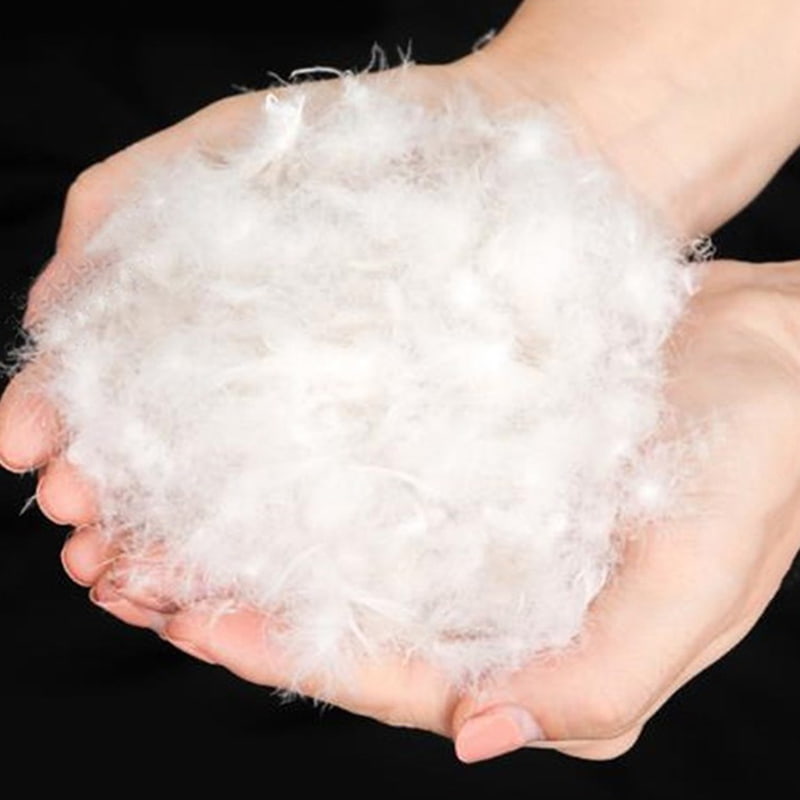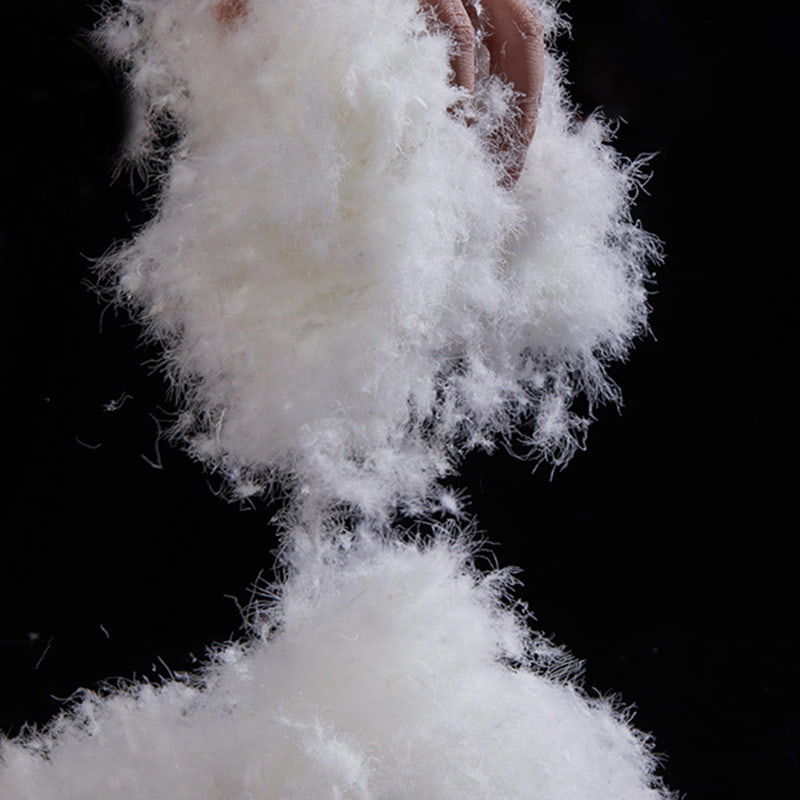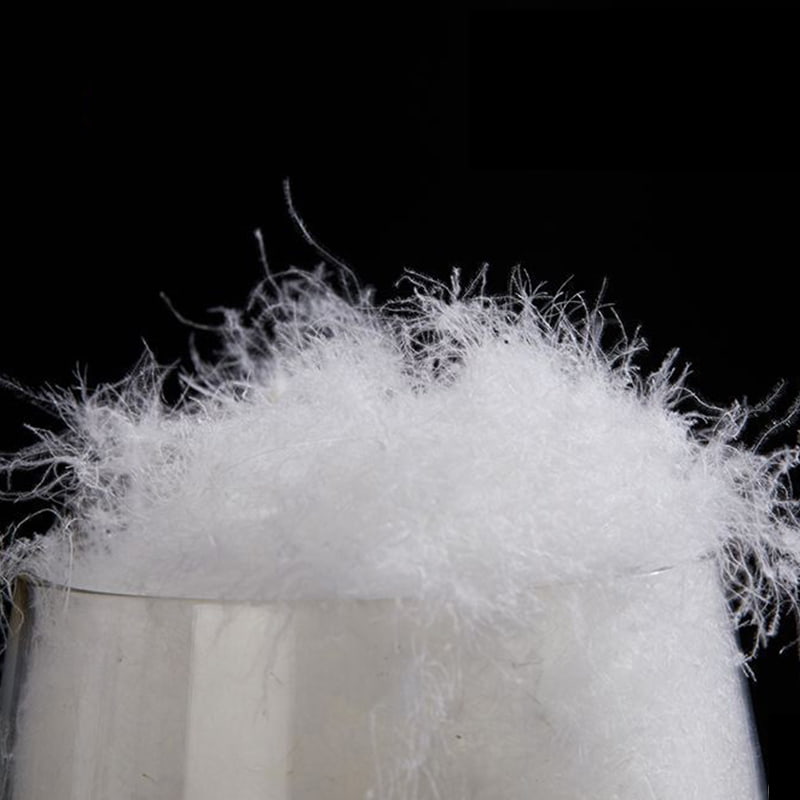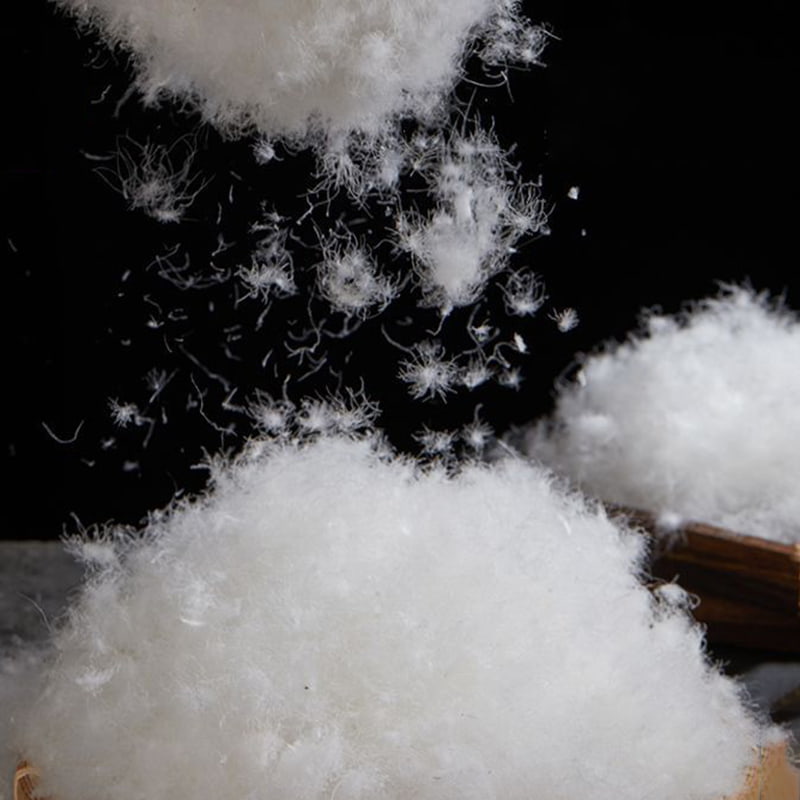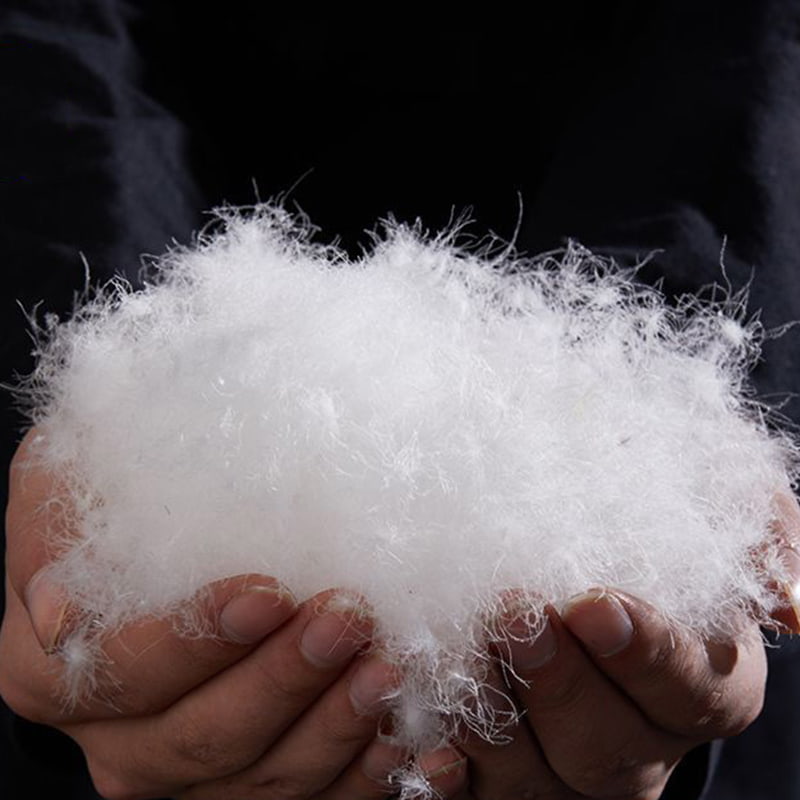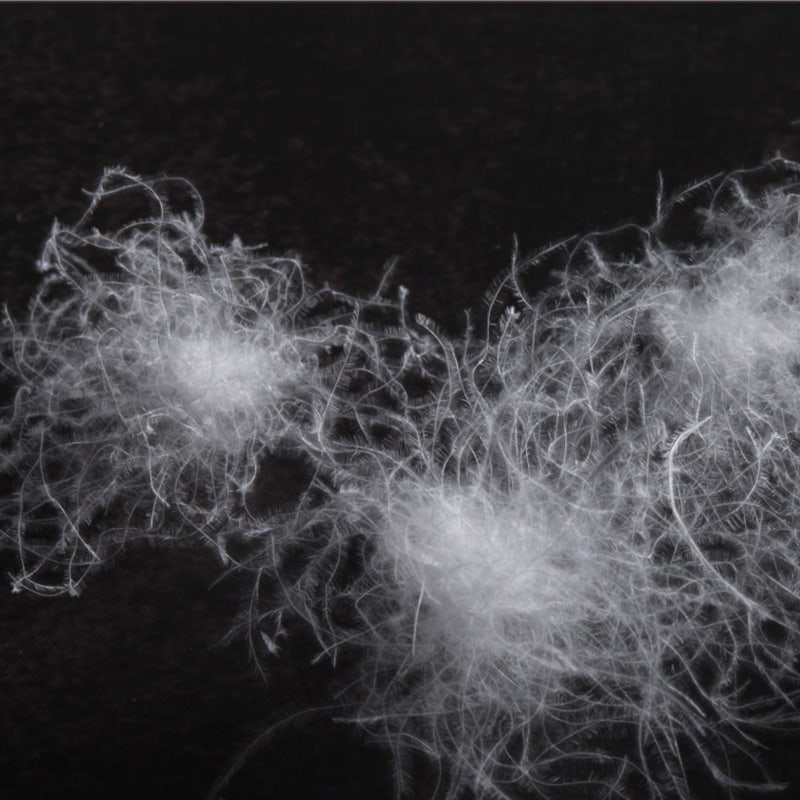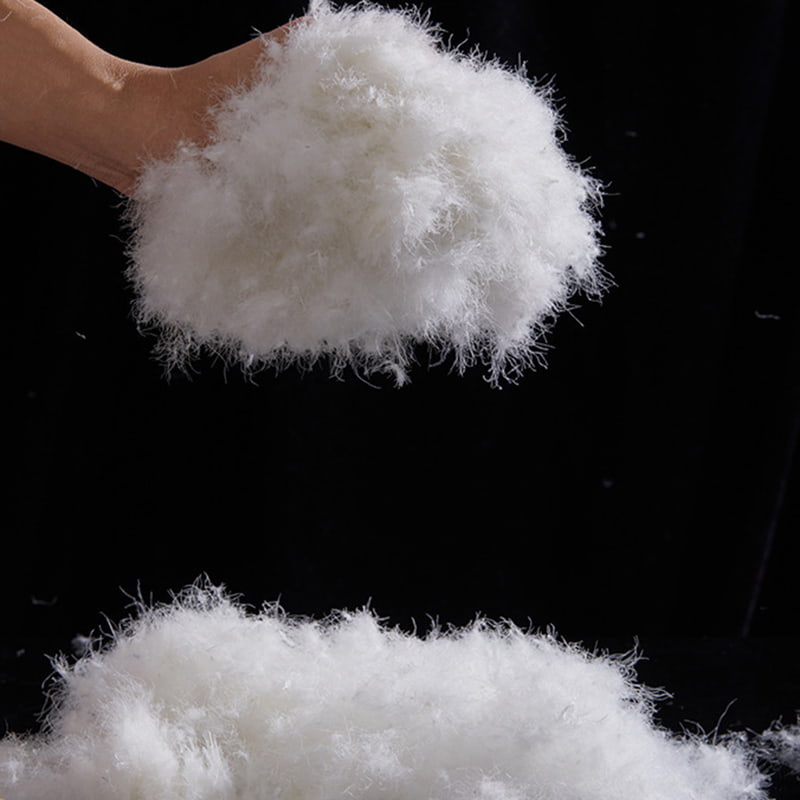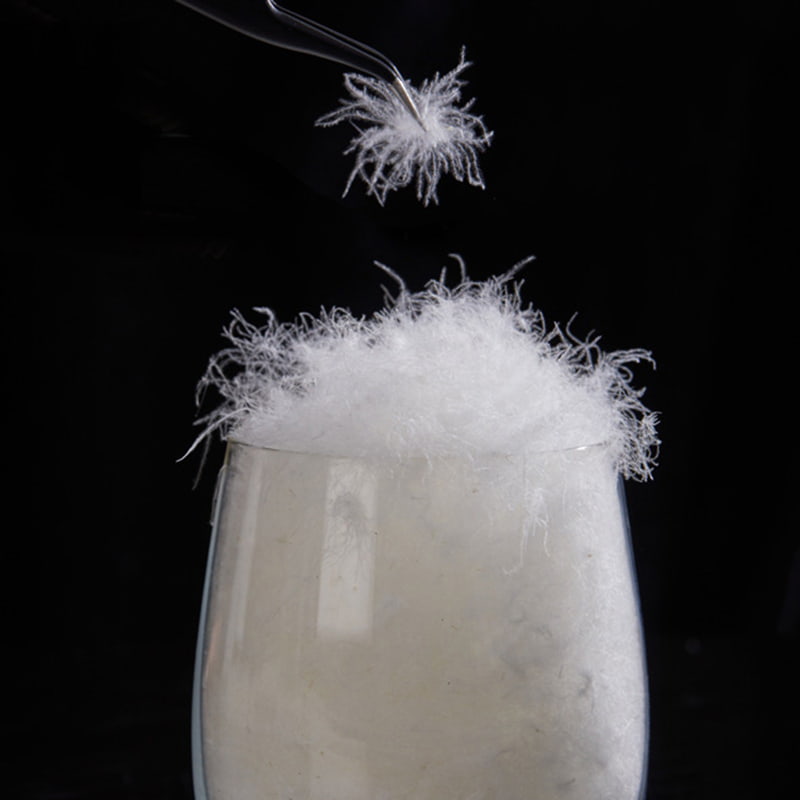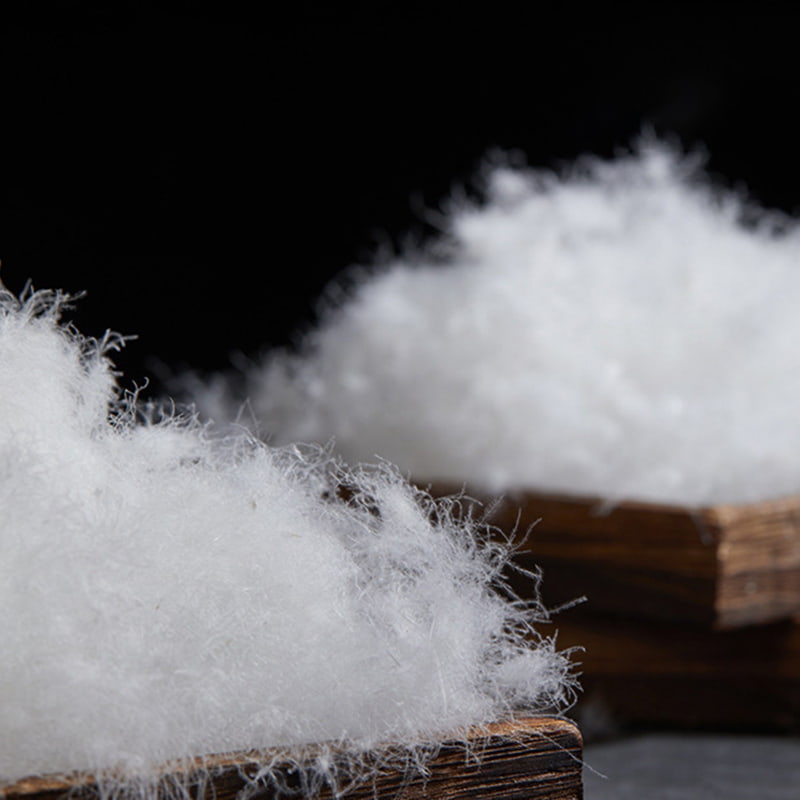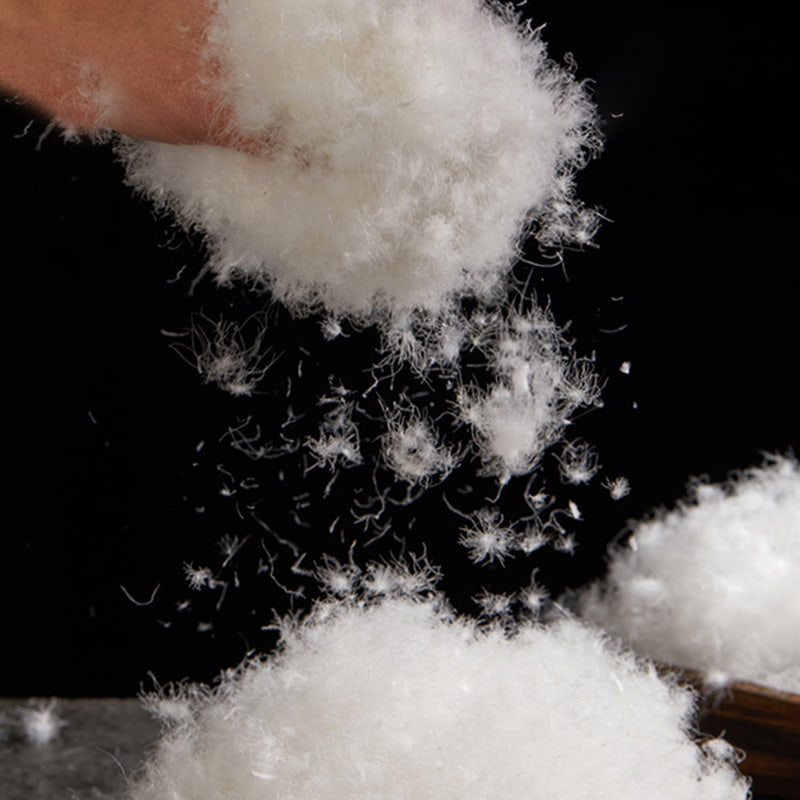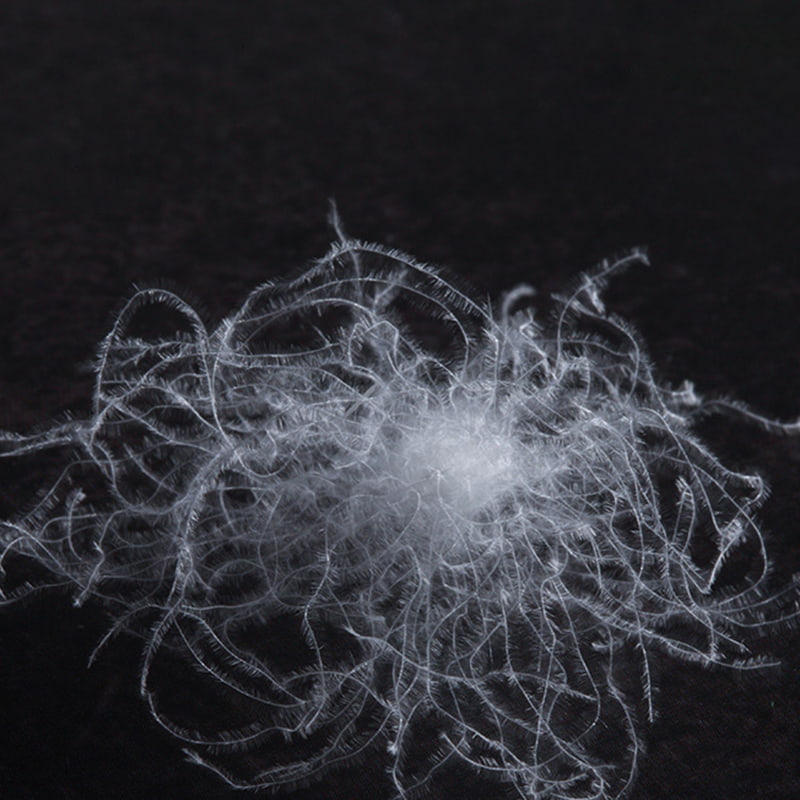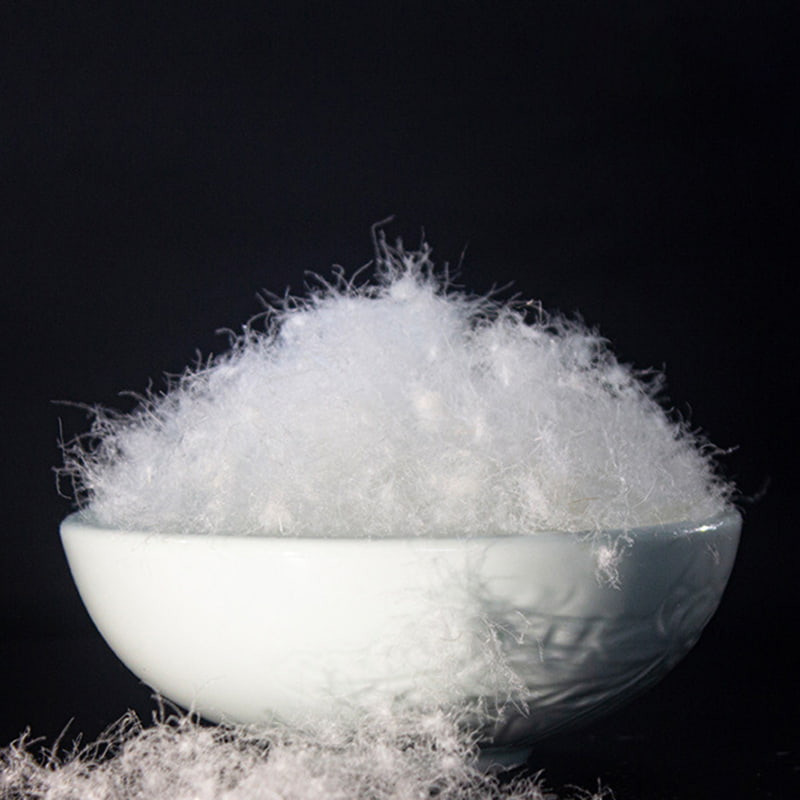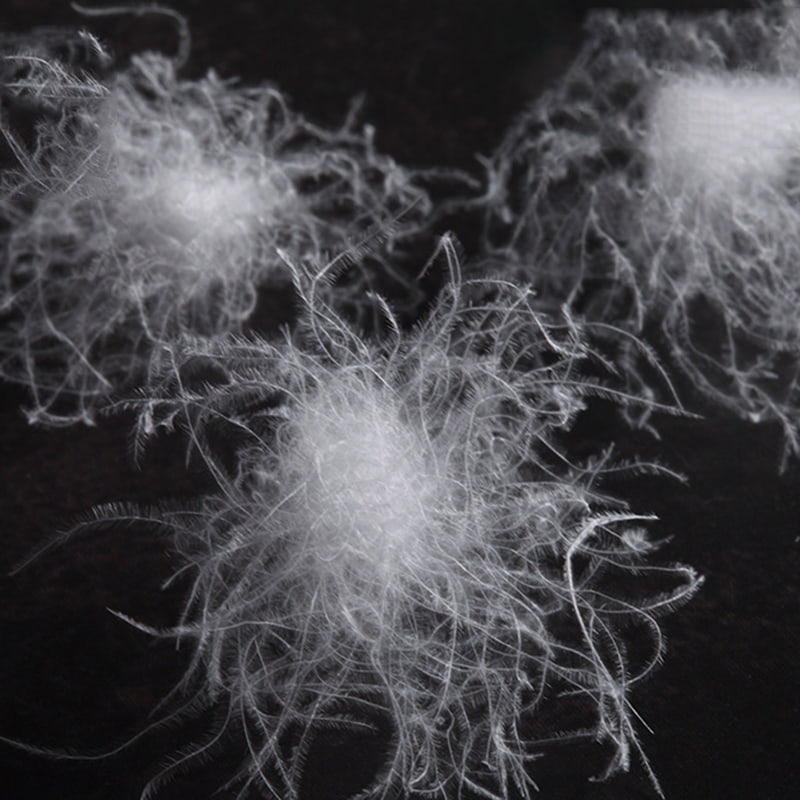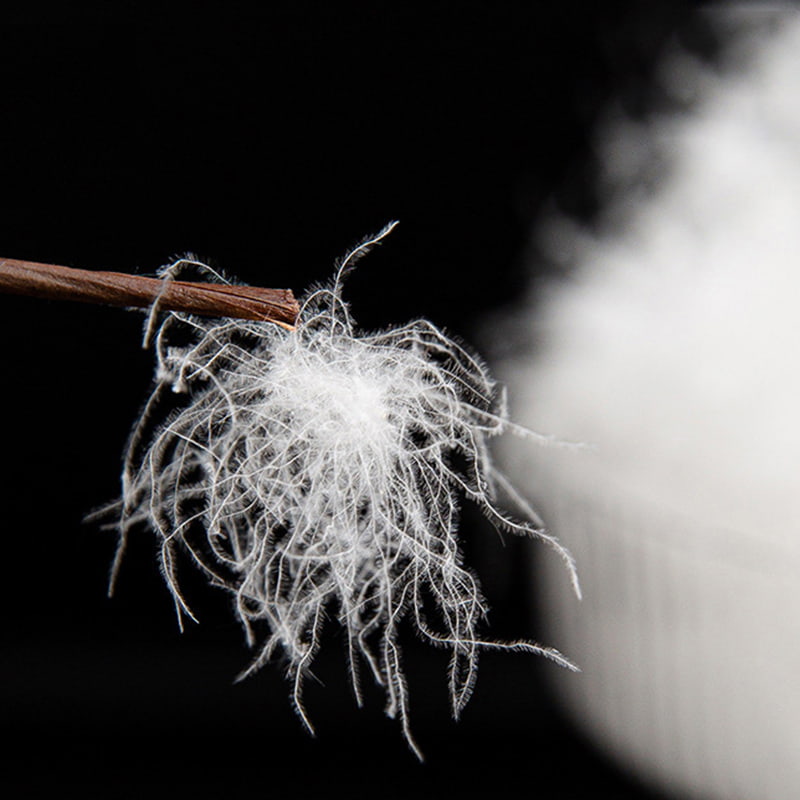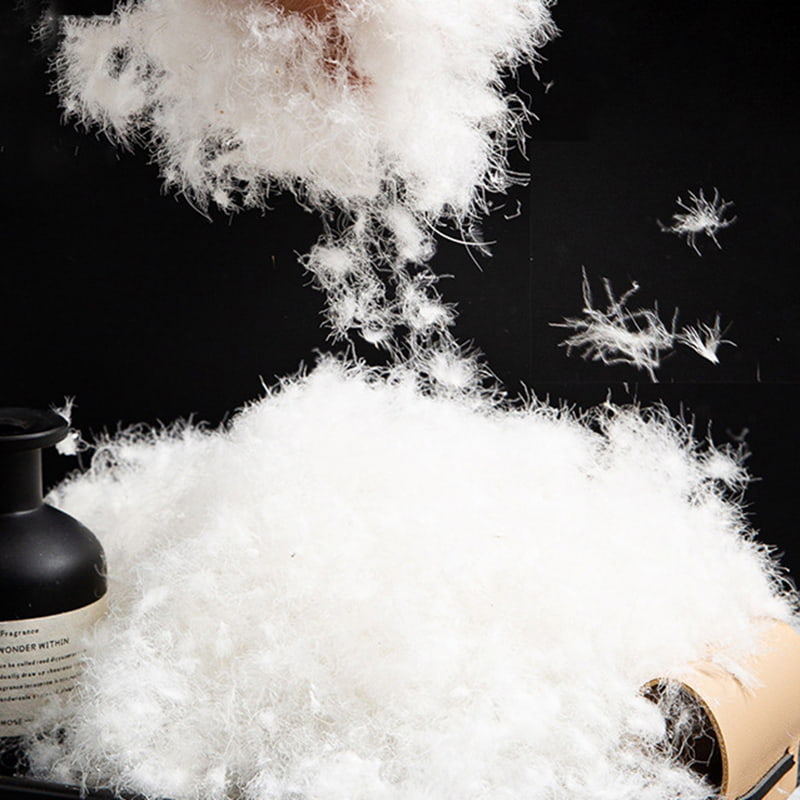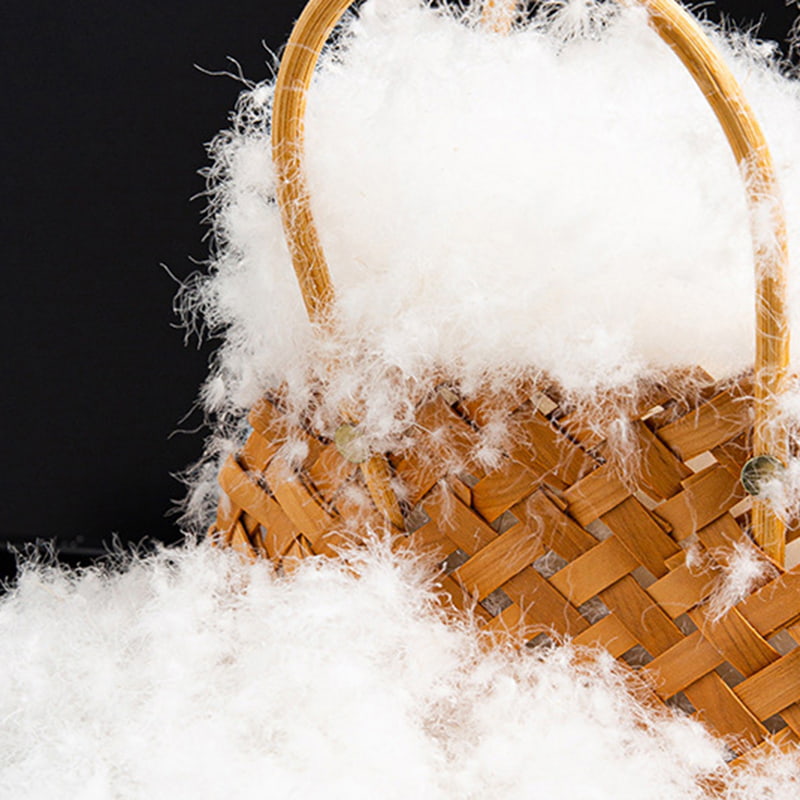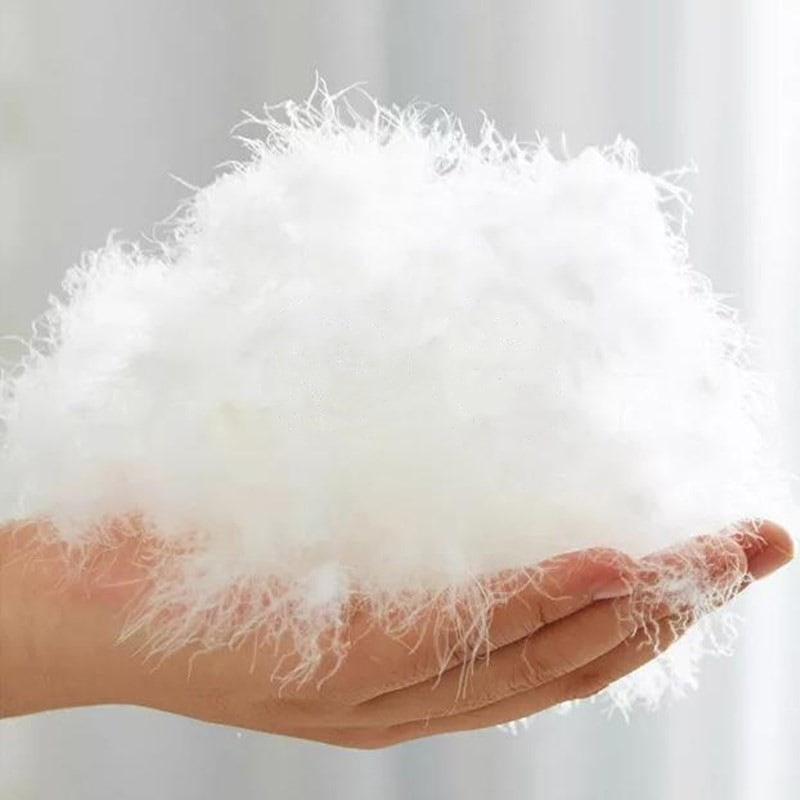90% Pure White Goose Down
Derived from the natural cold-resistant parts of rare white geese - the abdomen, neck and wing down area, its unique reed-like down structure and flaky feathers form a golden ratio combination. As an outstanding representative of high-end animal protein fibers, each goose down fiber is in a three-dimensional spherical shape, with tens of millions of nano-scale triangular pore matrices densely distributed on the surface. These precise pore structures are like micro-temperature control valves, which can intelligently sense the ambient temperature difference and autonomously adjust the fiber gap. When the body's heat energy is released, the pores form a three-dimensional temperature-locking layer through the physical adsorption effect, and at the same time construct a multi-dimensional heat-insulating protective net, effectively blocking the three-dimensional penetration path of cold air, creating an all-weather constant temperature microclimate environment for the wearer.


 English
English Español
Español عربى
عربى
